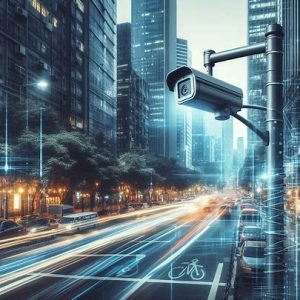![]()
Surveillance technology has quietly reshaped the way designers approach everyday objects and spaces. Private investigators, once reliant on bulky cameras and obvious tracking devices, now inspire sleek, subtle innovations that blend seamlessly into daily life. From pens with hidden microphones to minimalist GPS trackers, the influence of discreet surveillance is evident. Designers face a unique challenge: create products that serve a purpose without drawing attention. This balance of form and function is transforming aesthetics and security in equal measure.
Inspiration from Private Investigators
Private investigators have long needed tools that avoid detection while delivering results that are court admissible. Their work demands discretion, and modern designers have taken note. For instance, a seemingly ordinary wall clock might house a high-definition camera, capturing footage without raising suspicion. These innovations stem from the need to gather evidence quietly, whether for legal cases or personal investigations. As a result, designers prioritize subtlety, ensuring devices blend into their surroundings while maintaining high performance. This trend extends beyond gadgets to influence furniture, vehicles, and even public spaces.
Tracking Devices: Small but Mighty
Consider the evolution of tracking devices. Early GPS trackers were clunky, often requiring external power sources or frequent battery changes. Today, they’re small enough to fit inside a keychain or a child’s backpack. Designers have streamlined these devices, focusing on minimalism to avoid detection. Yet, functionality remains key. These trackers must provide real-time data, withstand environmental challenges, and operate for extended periods. The result? Devices that look like everyday objects but perform with precision. This shift reflects a broader design philosophy: prioritize utility without sacrificing style.
Surveillance in Public Spaces

Public spaces are also adapting to this discreet surveillance trend. Architects and urban planners now integrate security features into their designs without disrupting aesthetics. For example, streetlights might double as surveillance cameras, blending into cityscapes while enhancing safety. Similarly, smart mirrors in retail stores can monitor for shoplifting while appearing as standard fixtures. These designs require careful planning. How do you hide a camera in plain sight? The answer lies in understanding human behavior—people rarely notice what feels familiar. By leveraging this, designers create spaces that feel safe yet unobtrusive.
Balancing Ethics and Discretion
However, this fusion of surveillance and design raises ethical questions. When does discretion cross into deception? Hidden cameras in personal spaces, even if legally installed, can feel invasive. Designers must navigate this fine line, ensuring their creations respect privacy while meeting security needs. Transparency matters too. If a device collects data, users should know its purpose and scope. Some designers address this by incorporating subtle indicators, like a faint LED glow, to signal when a device is active. This approach maintains trust while preserving the discreet aesthetic.
Technology Fuels Innovation
Technology advances also drive these innovations. Miniaturization has been a game-changer, allowing designers to embed powerful components into smaller forms. Micro-cameras, for instance, now capture 4K footage despite being the size of a button. Battery life has improved too, enabling devices to operate longer without maintenance. These advancements give designers more freedom to experiment with form. A stylish bracelet might track a wearer’s location, or a sleek desk lamp could record audio. The possibilities are vast, but the goal remains constant: blend in, perform well.
READ ALSO: How Retired Law Enforcement Agents Bring Design Thinking to Safety
Beyond Security: Consumer Applications
Surveillance-inspired design isn’t limited to security. Consumer products are adopting similar principles. Fitness trackers, for example, monitor health metrics discreetly, doubling as fashion accessories. Smart home devices, like doorbell cameras, integrate seamlessly into home exteriors. These products borrow from the private investigator’s playbook, prioritizing understated functionality. Why stand out when you can blend in? This mindset is reshaping how we interact with technology, making it feel like a natural extension of our environment.
The Future of Discreet Design
Looking ahead, the influence of surveillance technology on design will only grow. As artificial intelligence and IoT (Internet of Things) evolve, devices will become smarter and even less noticeable. Imagine a world where every object serves a dual purpose—your coffee mug could monitor room activity, or your car key could transmit data. Designers will continue to push boundaries, finding new ways to merge aesthetics with utility. For now, the work of private investigators remains a quiet but powerful force, shaping a future where discretion is the ultimate design principle.
